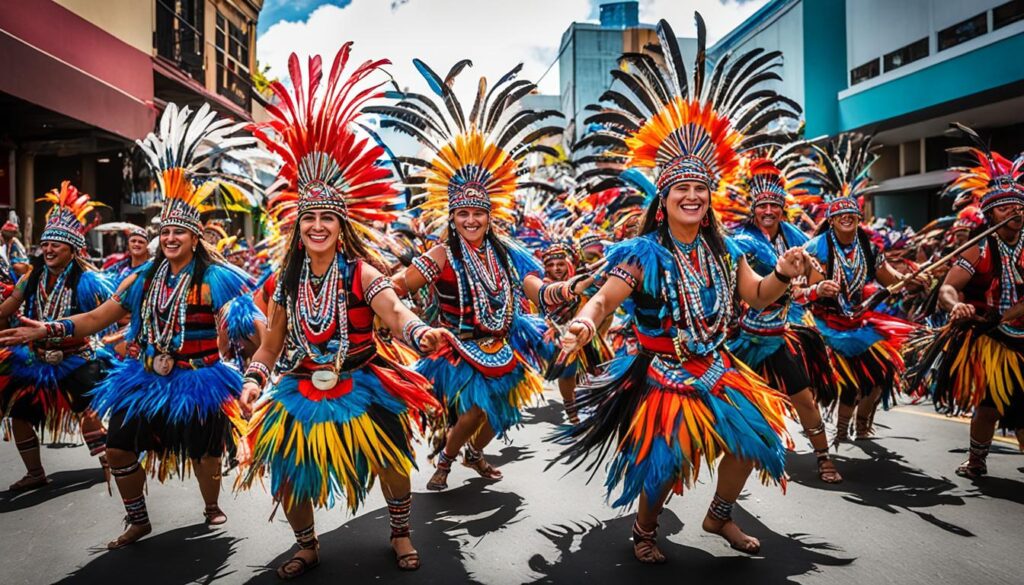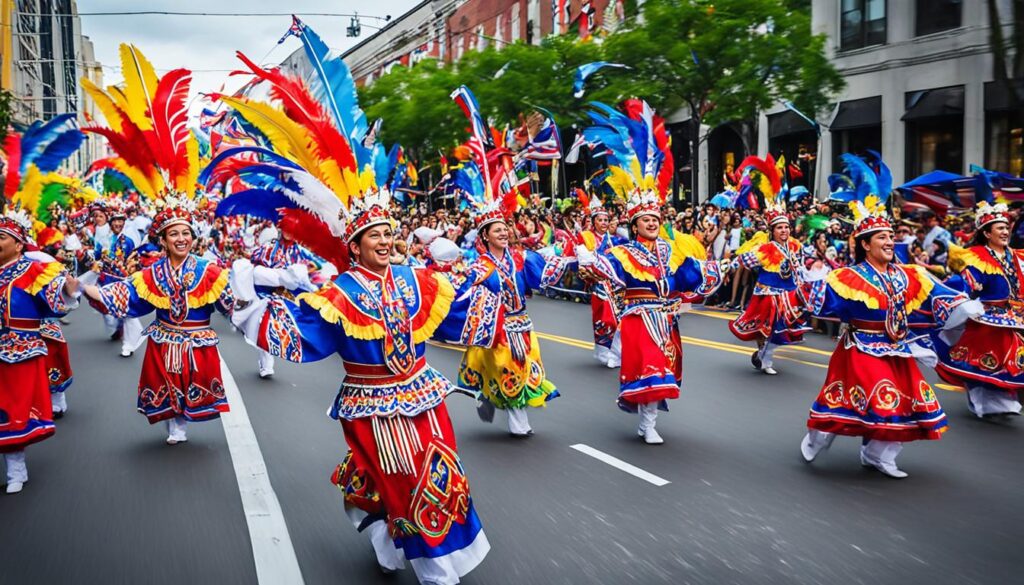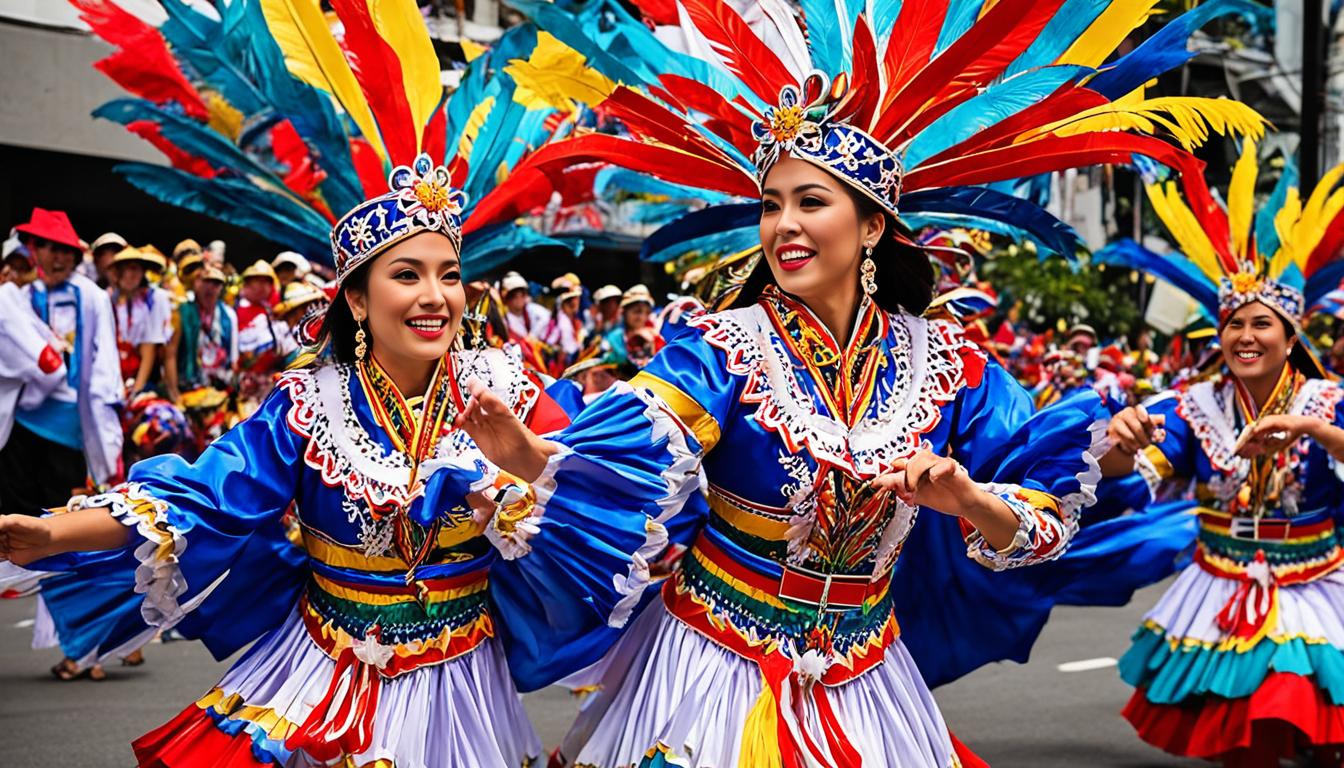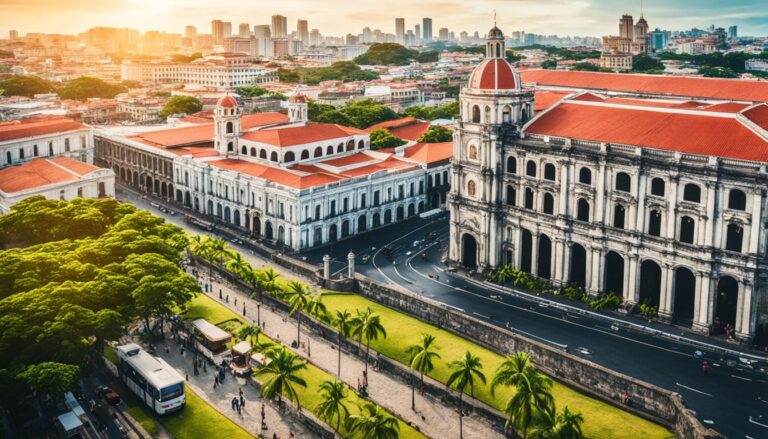Vibrant Echoes: A Journey Through the Festive Heartbeat of Filipino Culture 🎉
Imagine streets awash with a kaleidoscope of colors, the air pulsating with rhythmic drum beats, and the taste buds awakening to the rich flavors of celebratory feasts. This isn’t just a figment of the imagination—it’s the living, breathing essence of Philippine Festivals. Renowned worldwide, these cultural celebrations symbolize more than just jubilant revelry; they are the pulsating heart of the Philippines’ rich cultural heritage. Each municipality, with its unique backstory and cherished customs, transforms into a grand stage displaying the country’s local traditions and communal ethos through vibrant festivals and colorful parades.
The Philippines, an archipelago rich in history and spirit, invites globetrotters to dive into its grand mosaic of Filipino festivals. More than just attractions, these events are a profound expression of a nation’s soul, narrating tales of resilience, faith, and unity, amidst the backdrop of their famous Philippine festivals. As we unravel the narratives behind these spectacular festivities, discover how each Philippine cultural event contributes to the country’s storied festive traditions, leaving an indelible mark on all who partake in the celebration.
The Festive Spirit of the Filipino People
The effervescent energy that defines Filipino festivals is an emblematic trait of the Philippines, a clear display of the enduring joy and community spirit that underpins the nation’s rich cultural fabric. Each barangay, municipality, and city bursts into a spectacular showcase of local traditions and festive traditions that draw both the young and the elderly into the communal embrace of merriment and cultural pride.
Filipino festivals are not merely calendar events but pivotal social and community gatherings that reinforce the social fabric of the nation. From the Luzon highlands to the Visayan islands and down to Mindanao, every locality transforms into a vibrant arena of Philippine cultural events, exhibiting a shared heritage that transcends geographic and social boundaries.
Cultural celebrations in the Philippines are multifaceted; they are times when homes become open houses, roads morph into banquet halls, and where the streets become pulsating veins of dances and parades. Historically rooted community fiestas are zealously guarded, ensuring that they continue to offer a link to the past while simultaneously adapting to contemporary times.
- Ati-Atihan Festival – a fusion of history, culture, and faith
- Pintados Festival – a paint-splashed display of local tradition
- Panagbenga Festival – a floral tribute to nature’s bounty
These gatherings are much more than a call to party; they are a public affirmation of the festive traditions that define local identities. They encourage community participation, foster tourism, and promote cultural education. The fiesta is where the warmth of the Filipino hospitality shines brightest, welcoming one and all with open arms and offering an experience steeped in traditions and unity.
The synergy of modernity and the preservation of local traditions within these festivities ensures that each celebration is a harmonious blend of the past and present. As the colorful parades wind through town streets, and as communities engage in age-old rituals and cheer on spirited performances, the essence of Filipino culture dances vibrantly under the tropical sun.
Whether one is drawn by the spiritual tapestry woven into festivals like Sinulog and Santacruzan or the jubilant chaos of secular fetes such as the MassKara and Kadayawan, there is a palpable sense of belonging and community that resonates vividly through each event. This is the very heartbeat of the Filipino festivals – a rhapsody of life’s joys, sorrows, and triumphs celebrated with equal fervor.
Philippine Festivals: Emblems of History and Faith

In the archipelago of the Philippines, a series of festivals illuminate the intrinsic blend of history and spirituality embedded in the nation’s culture. Each festival, from the rhythmic Ati-Atihan to the vibrant Kadayawan, represents a facet of the Filipino’s deep reverence for traditions and their unparalleled expression of gratitude. These events offer a spectacle of color, emotion, and devoutness, creating an immersive experience for both locals and tourists alike.
Ati-Atihan: The Mother of All Festivals
Known as the Mother of All Festivals, Ati-Atihan traces its origins back to the 13th century and stands as a testament to the cultural fusion that shapes Philippine history. This grand celebration rooted in both indigenous practices and religious pageantry, culminates in honor of the Child Jesus, locally revered as Santo Niño.
Religious Pageantry and Local Delights at Sinulog and Dinagyang
The Sinulog and Dinagyang Festivals are vibrant tapestries of religious pageantry, each festivity pulsating with dance, music, and a kaleidoscope of colors. Sinulog, held in Cebu, is a grand festival in veneration of the Child Jesus. Dinagyang, on the other hand, gives life to the story of the arrival of Malay settlers in Iloilo and their conversion to Christianity, adding a layer of historical reenactment to the celebrations.
Kadayawan Festival: Davao’s Thankful Gratitude for Harvest
In Davao, the Kadayawan Festival blooms as an expression of gratitude for the harvest, showcasing the city’s bounty and the cultural diversity of its people. The thanksgiving festivities acknowledge the gifts of nature and the prosperity bestowed upon the land, reflecting the indigenous spirit of thanksgiving.
Moriones Festival: A Holy Week Historical Reenactment
The streets of Marinduque become alive with the vivid Moriones Festival, an annual historical reenactment during Holy Week. This festival features locals donning masks and garb resembling Roman soldiers, as portrayed in the biblical tales of the search and subsequent beheading of Saint Longinus, the blind Roman centurion who was healed when he pierced the side of the crucified Jesus. Here, history and faith merge, as participants reenact these dramatic events as a unique form of the passion play.
| Festival | Date | Location | Significance |
|---|---|---|---|
| Ati-Atihan | 3rd Sunday of January | Kalibo, Aklan | Honor of the Child Jesus, Cultural Pride |
| Sinulog | 3rd Sunday of January | Cebu City | Religious reverence to the Child Jesus |
| Dinagyang | 4th Sunday of January | Iloilo City | Celebration of Filipino history and conversion to Christianity |
| Kadayawan | 3rd Week of August | Davao City | Gratitude for bountiful harvests and cultural diversity |
| Moriones | Holy Week | Marinduque | Commemoration of the life of Patron Saint Longinus |
Unveiling the Diverse Filipino Culture Through Festivals

The Philippines, a country with a rich cultural heritage, comes alive each year with vibrant parades and colorful events that showcase its unique Filipino culture. Festivals play a crucial role in highlighting the festive traditions and local traditions that make this nation’s cultural tapestry so intriguing.
Masskara Festival: Bacolod’s Symbol of Resilience and Joy
Celebrated in Bacolod, the Masskara Festival is a testament to the unwavering spirit of the Filipino people. It was originally conceived as a beacon of hope during times of crisis. Today, the 20-day event is filled with vibrant parades, sporting elaborately designed masks that symbolize the faces of happiness in the face of adversity.
Pahiyas Festival: A Harvest of Beauty and Creativity
In Lucban, Quezon, the Pahiyas Festival transforms the town into a canvas of creativity, honoring the bounty of the harvest. Residents decorate their homes with kiping, a rice-made decoration, and other agricultural produce to express gratitude to San Isidro Labrador, the patron saint of farmers.
Higantes Festival: Giants of Echoing Cultural Victory
The Higantes Festival in Angono, Rizal, presents an engaging sight with its colossal paper-mâché giants. These towering figures hold a dual significance, recalling historical methods of protest and celebrating the town’s local patron, San Clemente.
Together, these festivals not only provide a portal to the rich cultural heritage of the Philippines but also unite communities in reveling in their shared identities and local traditions. The festivals stand as a hallmark of the cultural heritage that Filipinos preserve and proudly share with the world.
| Festival | Location | Cultural Significance | Main Attraction |
|---|---|---|---|
| Masskara Festival | Bacolod | Resilience through economic hardships | Cheerful masks and street dances |
| Pahiyas Festival | Lucban, Quezon | Agricultural prosperity and community creativity | House decorations with kiping |
| Higantes Festival | Angono, Rizal | Historical protest and patron saint’s honor | Giant paper-mâché figures |
Conclusion
Immersed in a nation where history resounds as fervently as the joyous chants at its gatherings, the Philippine festivals serve as pulsating heartbeats of a culture both rich and eclectic. From the ancient cadences of the Ati-Atihan to the jubilant parades of the Masskara Festival, each celebration is a testament to the Filipino traditions that have weathered the ebb and flow of time. It’s through these famous Philippine festivals that the vibrant tapestry of the nation’s spirit is not only witnessed but felt.
The buzz of energy at these Philippine cultural events is undeniably contagious, invoking a sense of belonging and exhilaration among locals and visitors alike. With every step taken in sync with the country’s rhythmic beats, participants engage in an experiential journey through the Philippines’ rich cultural heritage. These occasions are much more than dates on a calendar; they are dynamic spaces where the past and present coalesce, bringing forth a continuous stream of identity and community.
To experience the Philippine festivals is to dive headlong into a sea of colors, flavors, and emotions, each wave bringing with it the legacy of a people defined by their capacity to celebrate life in all its facets. Each moment shared within these majestic festivities serves as an echoing reminder that joy, unity, and cultural pride can triumph amidst the greatest adversities. For every soul seeking to understand the heart of Filipino culture, these festivals offer not just a glance but a deep, resonant connection to an ever-lively heritage.







